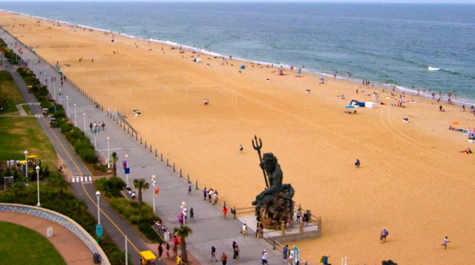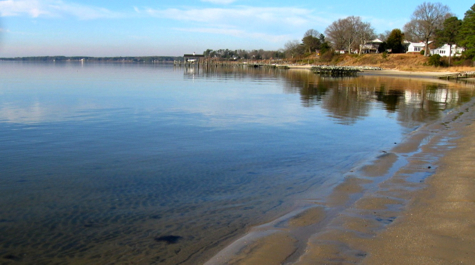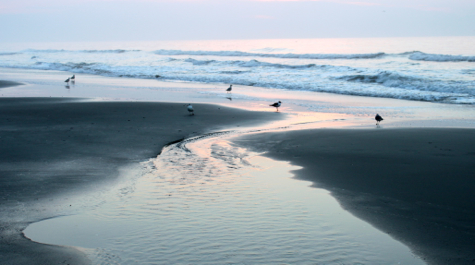VIMS professor authors great "beach read"
For 40 years, VIMS professor Carl Hobbs has worked the beaches of eastern North America. In his recent publication, The Beach Book: The Science of the Shore, he shares selected insights with recreational beach-goers. By understanding some of the natural processes at work, Hobbs believes, vacationers can enhance their enjoyment of the environment they love.
Beach environments are remarkably transient. “Nature always is changing the world around us,” he says. “On the beach, you can see it in a matter of hours and days.”

In the book, Hobbs attempts to answer some of the basic but important questions commonly posed to him. These include "What is sand?," "Where does sand come from?," and "Why does its color range from white to black?"
People also want to know how many grains of sand a beach contains, he says. His simple answer is “a lot." For “fine” sand, with grains that measure one-eighth of a millimeter in diameter, Hobbs calculates that a single one-liter bottle will hold 512 million grains, while one cubic meter of beach would contain 512 billion grains.
Other topics introduced in the book relate to tidal inlets, salt marshes, and other aspects of coastal environments. He describes how the sun creates wind by heating the atmosphere, how the wind then blows both sand and water creating dunes and waves, and how waves grow larger and then “break.” He also considers tides, explaining that in Chesapeake Bay the tide change is approximately one meter whereas in the maritime provinces of Canada it is ten times as great.
In order to communicate the science involved, the book features numerous graphs and charts depicting events such as wave refraction—which explains why waves tend to break parallel to the shore—and wave diffraction—whereby waves extend into the lee of an obstruction. Other topics, such as beach erosion and beach migration, are enhanced with photographs—readers can actually see a house surrounded by ocean.

Hobbs' hope for readers of The Beach Book is that they, while visiting a sand dune or a tidal marsh or an oceanfront, can look up from one of the pages and say, “Yes, I just read about that, and I can see what’s happening."
By learning about such processes, readers will be more informed when considering ongoing policy issues involving topics such as beach replenishment, coastal road building, and coastal zoning measures, Hobbs says.
"If we as a society can understand how nature works, we can formulate better ways to cope with it, better ways to live with what she is doing to us and not try to force nature to fit what we need,” he says.



